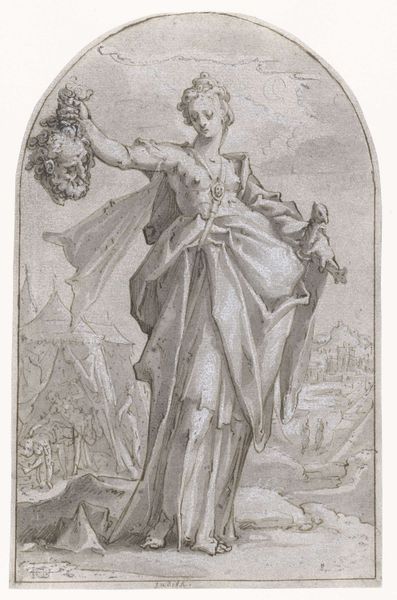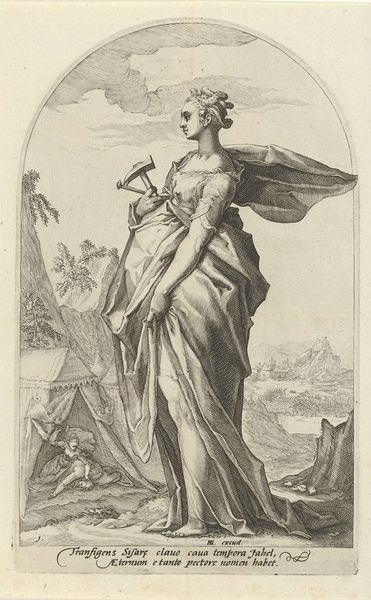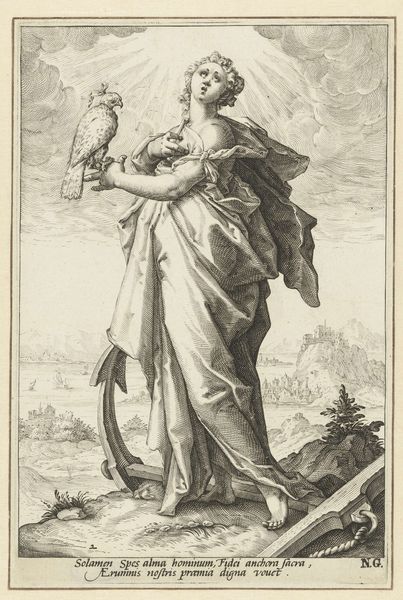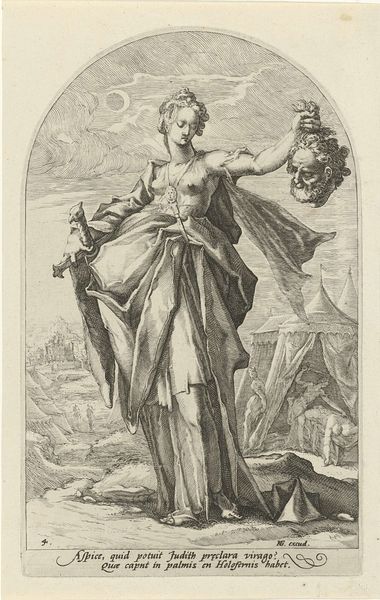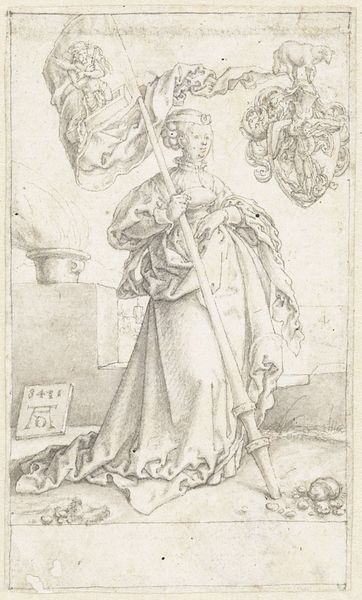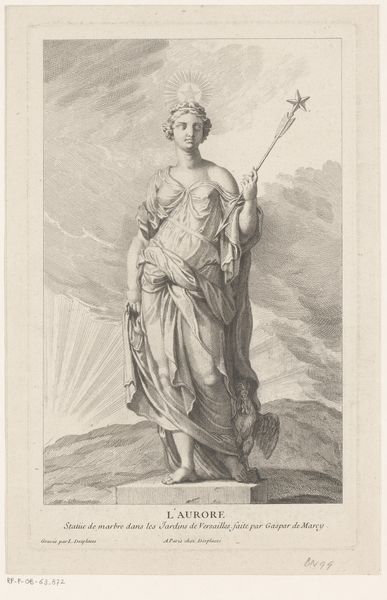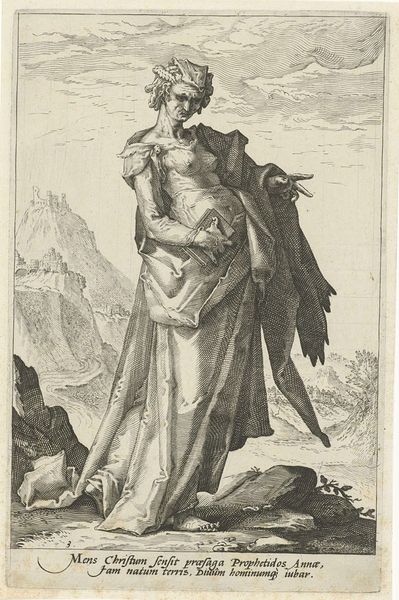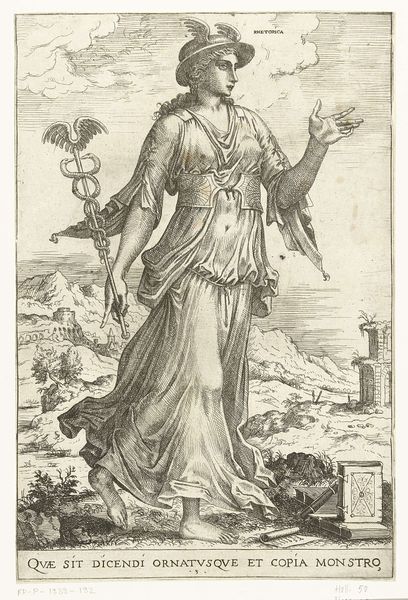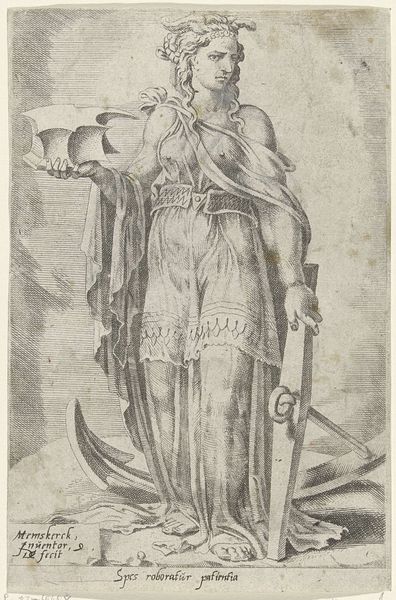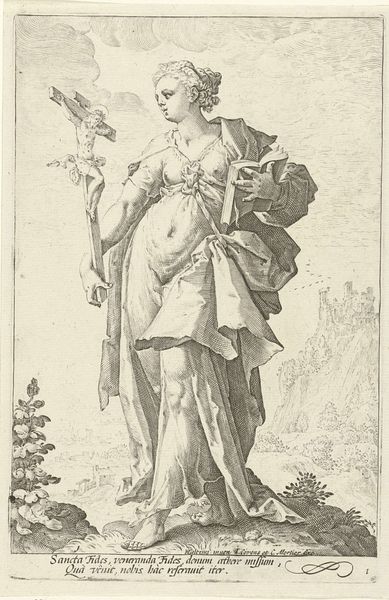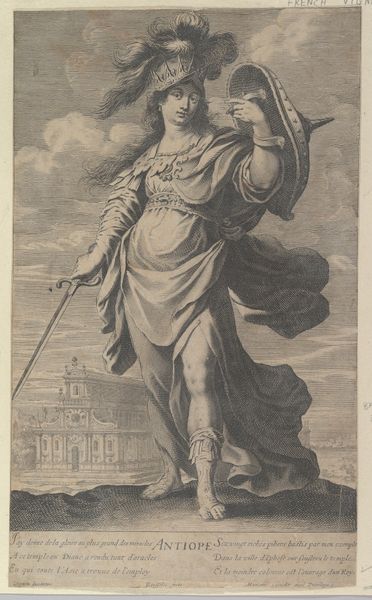
drawing, paper, ink, pen
#
drawing
#
allegory
#
narrative-art
#
pencil sketch
#
mannerism
#
figuration
#
paper
#
ink
#
pencil drawing
#
pen
#
history-painting
#
northern-renaissance
Dimensions: height 264 mm, width 171 mm
Copyright: Rijks Museum: Open Domain
Editor: This is "Jael met een hamer en een grote spijker," or "Jael with a Hammer and Large Nail," a pen and ink drawing from around 1586-1590 by Hendrick Goltzius. I’m immediately struck by the contrast between the serene expression on Jael's face and the violence implied by the hammer and nail. What can you tell us about this work? Curator: This piece offers a glimpse into the cultural narratives that informed late 16th-century European identity. Goltzius’s depiction of Jael, holding the tools she used to kill Sisera, isn’t simply a representation of a biblical story. It reflects a broader interest in female heroines and their role within social and political upheavals. How does the setting – that tent scene behind her - influence our reading of the character? Editor: I suppose it places her in a specific moment. We know exactly what just happened; there’s a before-and-after happening in one frame. It feels… staged. Curator: Precisely! Think about the function of art in the Dutch Republic during that period. Consider that narrative painting like this helped solidify societal norms and express civic values. How does the use of pen and ink contribute to the overall effect, perhaps shaping the perception of violence and heroism differently compared to, say, an oil painting? Editor: Ink gives it this quality of immediacy – like a news illustration rather than a grand statement. So, instead of celebrating the act, maybe the medium pushes us to think critically about violence itself? Curator: That's a keen observation! The relatively informal medium for such a charged subject matter suggests a desire to circulate these ideas widely. And how might the distribution of such imagery contribute to the broader conversations on religious conflict and moral authority during this era? Editor: I’m starting to see how it’s not just a picture, but a statement embedded in a particular time. Curator: Exactly. And the artist's choices amplify and complicate those statements. Editor: Thinking about art as this record of public sentiment has really shifted my perspective. Curator: And mine, regarding how contemporary artists tackle themes of violence and authority. Thank you!
Comments
No comments
Be the first to comment and join the conversation on the ultimate creative platform.
